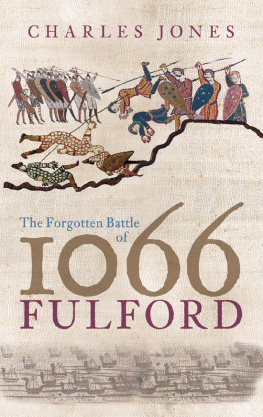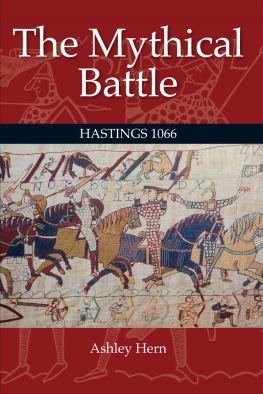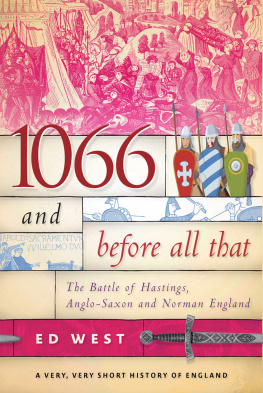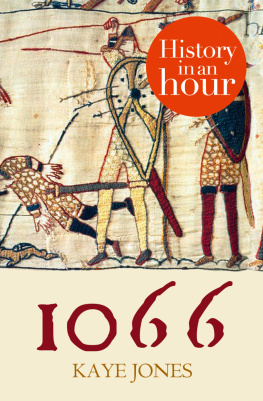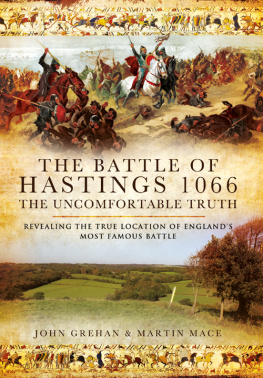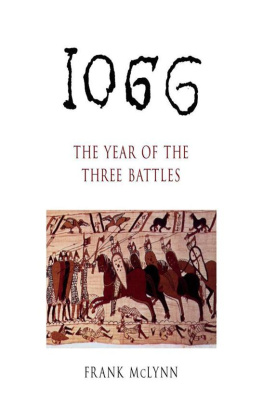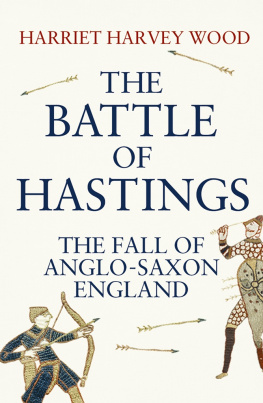The Forgotten Battle
of
1066
FULFORD
A BOUT THE A UTHOR
Charles Jones helped set up and has led the Lottery-funded Fulford Battlefield Society. With help from leading archaeologists, the society has spent five years investigating the location of the battle. He studied science at Cambridge University and spent over twenty years in the Territorial Army, which have both proved useful during this innovative investigation. He is now working to preserve the battlesite from encroaching housing development. He lives in Oxford.
The Forgotten Battle
of
1066
FULFORD
CHARLES JONES

This book is dedicated to my son Will Jones who has had to put
up with so much. Thank you.
This edition first published in 2007 by Tempus Publishing
Reprinted in 2009 by
The History Press
The Mill, Brimscombe Port
Stroud, Gloucestershire, GL5 2QG
www.thehistorypress.co.uk
This ebook edition first published in 2013
All rights reserved
Charles Jones, 2006, 2007, 2013
The right of Charles Jones to be identified as the Author of this work has been asserted in accordance with the Copyright, Designs and Patents Act 1988.
This ebook is copyright material and must not be copied, reproduced, transferred, distributed, leased, licensed or publicly performed or used in any way except as specifically permitted in writing by the publishers, as allowed under the terms and conditions under which it was purchased or as strictly permitted by applicable copyright law. Any unauthorised distribution or use of this text may be a direct infringement of the authors and publishers rights, and those responsible may be liable in law accordingly.
EPUB ISBN 978 0 7509 5674 1
Original typesetting by The History Press
Contents
Foreword
T he ongoing investigative work at the muddy ford, south of York, now enables a detailed discussion of the events of 20 September 1066 at Fulford. This book draws together the evidence, written, physical and deducible, of the events leading to the first of three battles in the autumn of 1066.
It is remarkable how many ancient documents report the events of eleventh-century England. This book rests on the pillars of recent scholarship, which has identified, compared and reported the many sources covering these events. These works are identified along with a discussion of the treatments of source material later. The book would have been impossible without them.
This work tries to explain what led to this first battle of 1066, why it took place at Fulford, what actually happened on the battlefield and what were the consequences. The possibility that there was a greater strategic plan behind the invasions of 1066 is also explored, together with the effect that military overstretch had on Anglo-Saxon England.
Battles do not happen in a political, dynastic, economic or social vacuum. This book therefore delves into the periods dynastic complexities, not just to understand the pragmatic politics that emerged during the generation preceding these events but to provide the context and motivations for the curtain-raiser of 1066. This is a magnificent human drama.
I have attempted to tell a remarkable story of some impressive people. As fiction, an editor would demand that this plot was simplified and made more credible. Hollywood could not cope with such a cast of characters or unlikely sequence of events.
Two young warriors, Edwin and Morcar, grandsons of the remarkable Lady Godiva, faced not only the greatest warrior of the age but also his ally, Earl Tostig. Tostig was the brother of the recently selected, one could almost say elected, King Harold II of England. Tostig had been ousted in a coup the year before by those he was now facing at Fulford.
Tostigs plots and plans posed strategic problems for England. His marriage had made William of Normandy his kin. His opponents, Edwin and Morcar, were also his brothers-in-law and, when their sister bore twins to King Harold, were uncles to an heir to the throne of England. Sadly, this is not Hollywood and there is an unhappy ending for all these good people. I do, however, try to end on a happy note in the closing words of the book.
I am very grateful to the many friends in York who have supported me in this enterprise and encouraged me to write this book. Special thanks go to Val Parker, who has not only got her hands dirty exploring the battle site but has undertaken the editorial work for the book.
I encourage readers to look at the short section explaining how the literary sources have been used and reconciled with the available physical evidence. The battlefield is like a thousand-year-old crimescene investigation; I attempt to explain how the gaps and inevitable conflicts in evidence have been handled.
It is unclear why so little attention has hitherto been paid to this important battle of 1066. I hope this book will begin to redress this neglect.
Charles Jones
Oxford 2005
Prelude to the
Events of 1066
A s Harold Godwinson, King Harold II of England for almost 250 days, stood on the shores of the Isle of Wight in early September 1066 he might have felt a sense of accomplishment. He could hardly have expected to find himself in his exalted, and now seemingly secure, position.
Harold was the second son of a great warlord, Godwin. Like his father, he was accustomed to serving kings rather than wearing the crown. His fathers political skills enabled the family to survive the rule of six kings of England. This feat was remarkable because four of the six accessions had been disputed. Choosing the wrong side had proved disastrous to the lives and fortunes of much of the old Anglo-Saxon nobility during the closing decades of the first millennium.
The twenty-four-year reign of Edward, which ended as 1066 dawned, had seen many crises resolved peacefully. One confrontation had seen Harold, along with the entire Godwin family, banished abroad. The restoration of Earl Godwins fortunes after barely a year in exile demonstrated a mastery of the power politics that had kept the borders secure and the country free from civil strife for over a generation.
This was a time of change. England, like its continental neighbours, was beginning to act as a nation. In the surrounding lands, warring factions were being forged into nations. The strife in the Nordic lands had produced what we might now interpret as a sense of national identity. The territories of Norway, Sweden and Denmark were being defined.
Further south, the unity provided by Charlemagne at the start of the ninth century had proved elusive, but the nascent state of France can be traced back to his military and intellectual domination of western Europe. The great dream of a new Roman Empire, under the spiritual guidance of the Church of Rome and the military protection of the German emperor, would last for many centuries.
In England the warlords and an independent clergy had developed a way of talking rather than fighting. Although Harold had no royal blood, he was the choice of powerful men to lead their land. A strong king was the best guarantee of peace at home and abroad. The only candidate from the ancient bloodline of King Alfred was thirteenyear-old Edgar, who remained under the protection of Harolds elder sister, the widowed queen, Edith.
The rise to pre-eminence of Wessex within the territory we now call England began with the departure of the Romans during the fifth century. We can only speculate about the transformation of the Celtic societies during the succeeding centuries. The story resumes during the seventh century when lowland Britain was occupied by what we call the Anglo-Saxons, migrants from the Germanic tribes. They arrived as hired protectors but soon settled and integrated.
Next page
